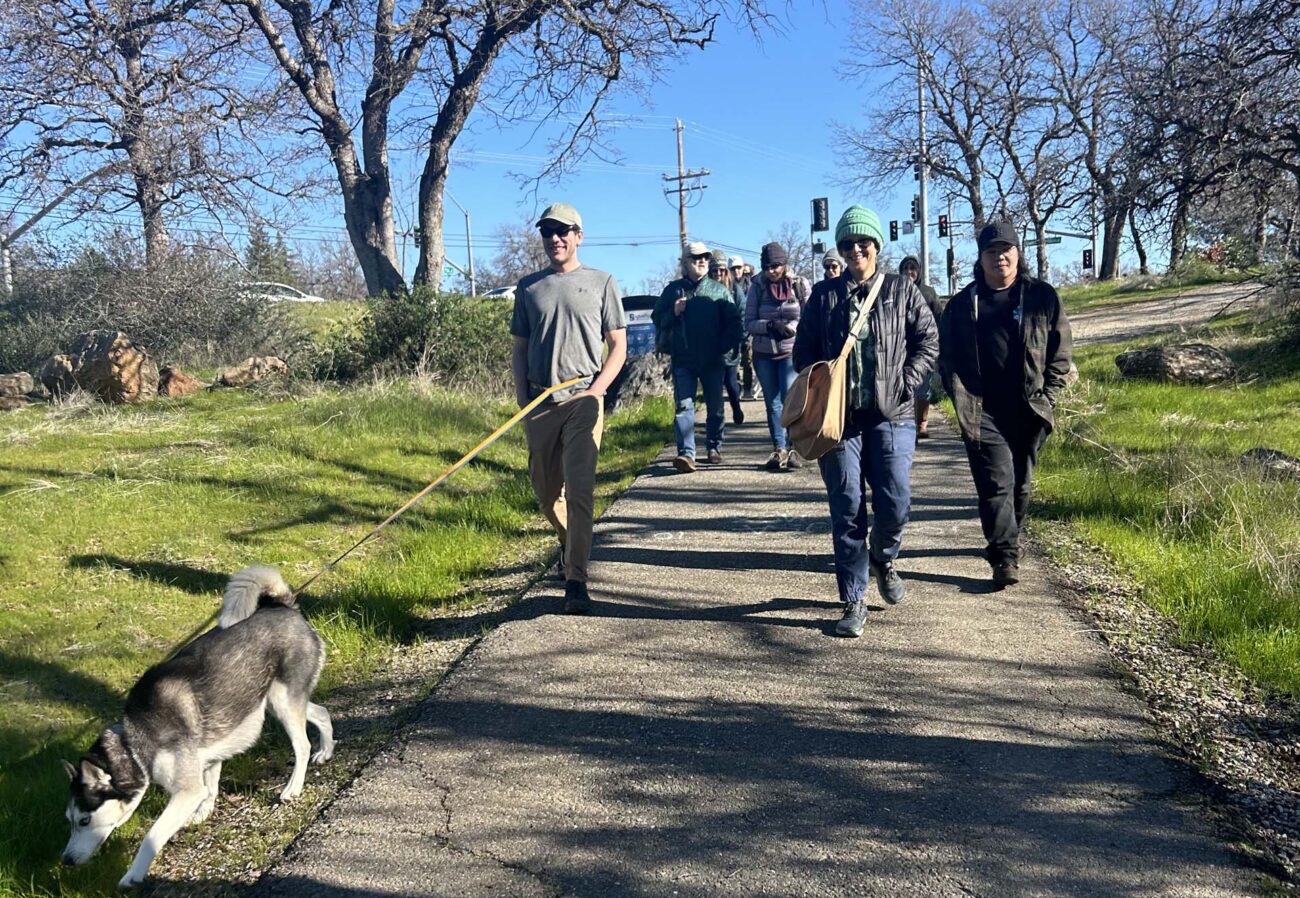
Photo taken by Sarah Risher.
Our February 9 walk along the Blue Gravel Mine Trail in West Redding was met with sunny skies and a brisk wind. Fifteen people and four canine friends joined Shasta Environmental Alliance walk leader Juliet Malik for an exploration of native plants and local history. We noted some early spring blooms such as Indian-warrior (AKA warrior’s plume), California pipevine, and a ceanothus (buckbrush) in full bloom.
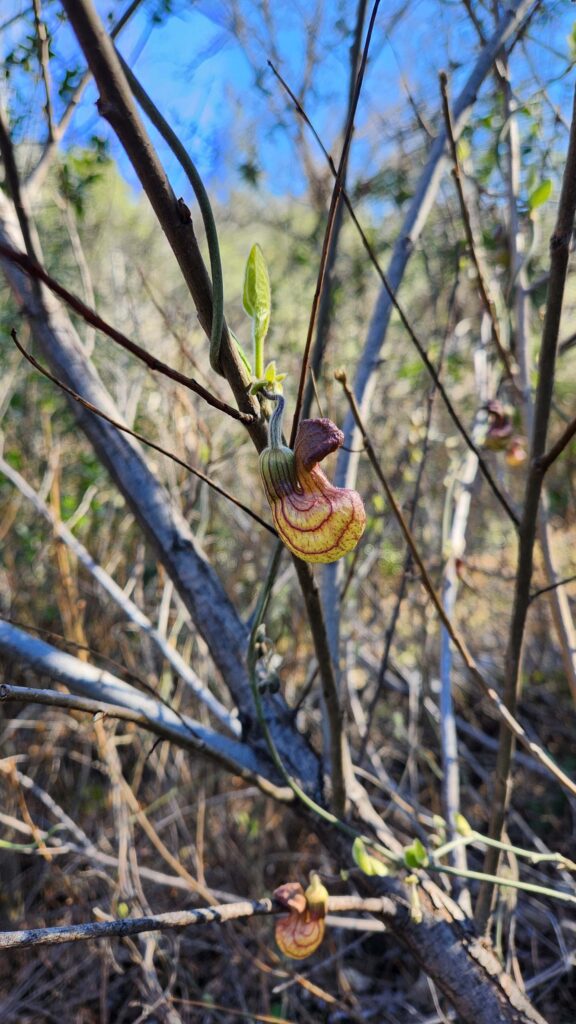
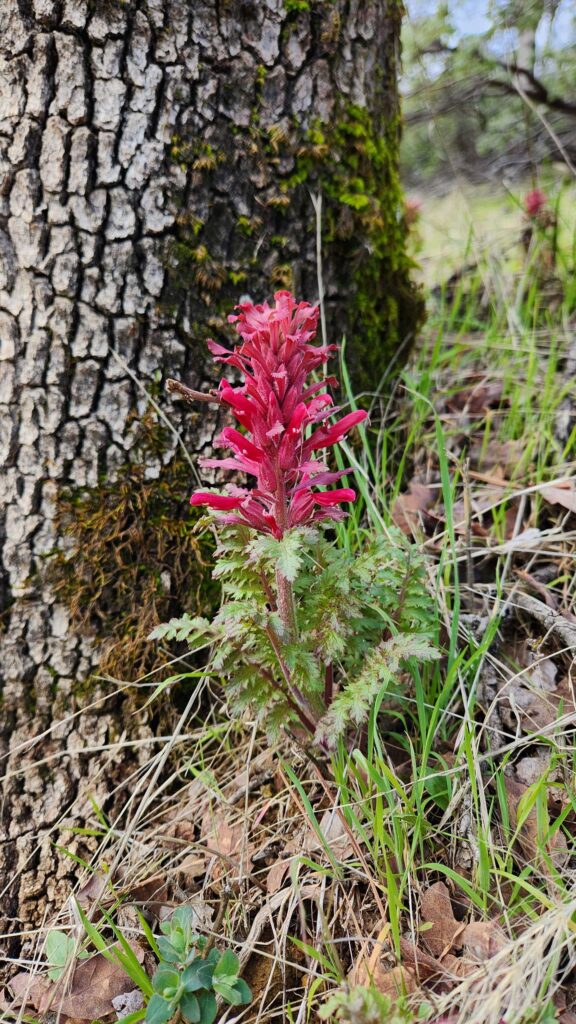
Farther down the trail, we stopped at the remains of the historical Blue Gravel Mine that defined this stretch of land between 1910 and 1958. Juliet provided a historical photo of the land from the 1930s (sourced from Jeremy Tuggle’s blog, Exploring Shasta History) to compare the stark differences between the denuded landscape of then, to the one today that is lush with mostly native vegetation.
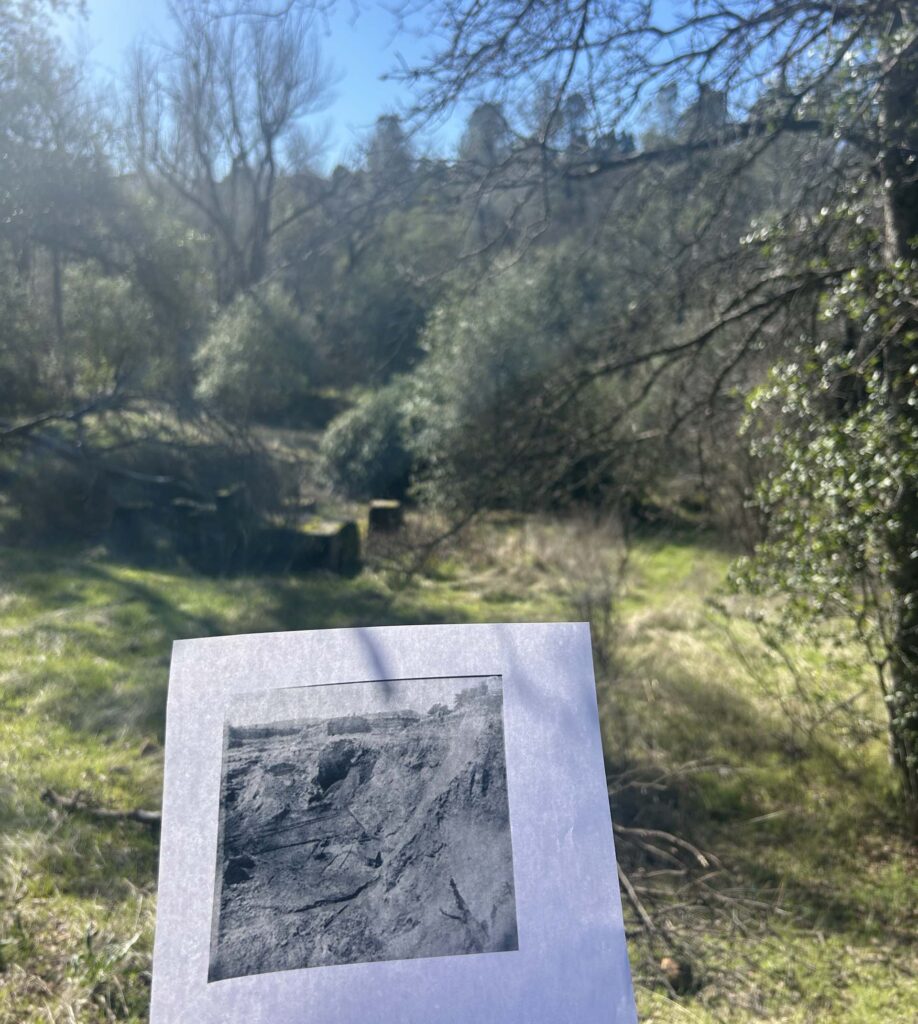
We discussed how taking an environmental history perspective allows us to think philosophically beyond the ecological impact and purported economic benefits of mining to consider how human cultural and ideological shifts are revealed in our landscapes. The physical remains of this once-city-owned gold mine are the concrete remnants of the stamp mill that crushed the extracted quartz to separate out the gold.
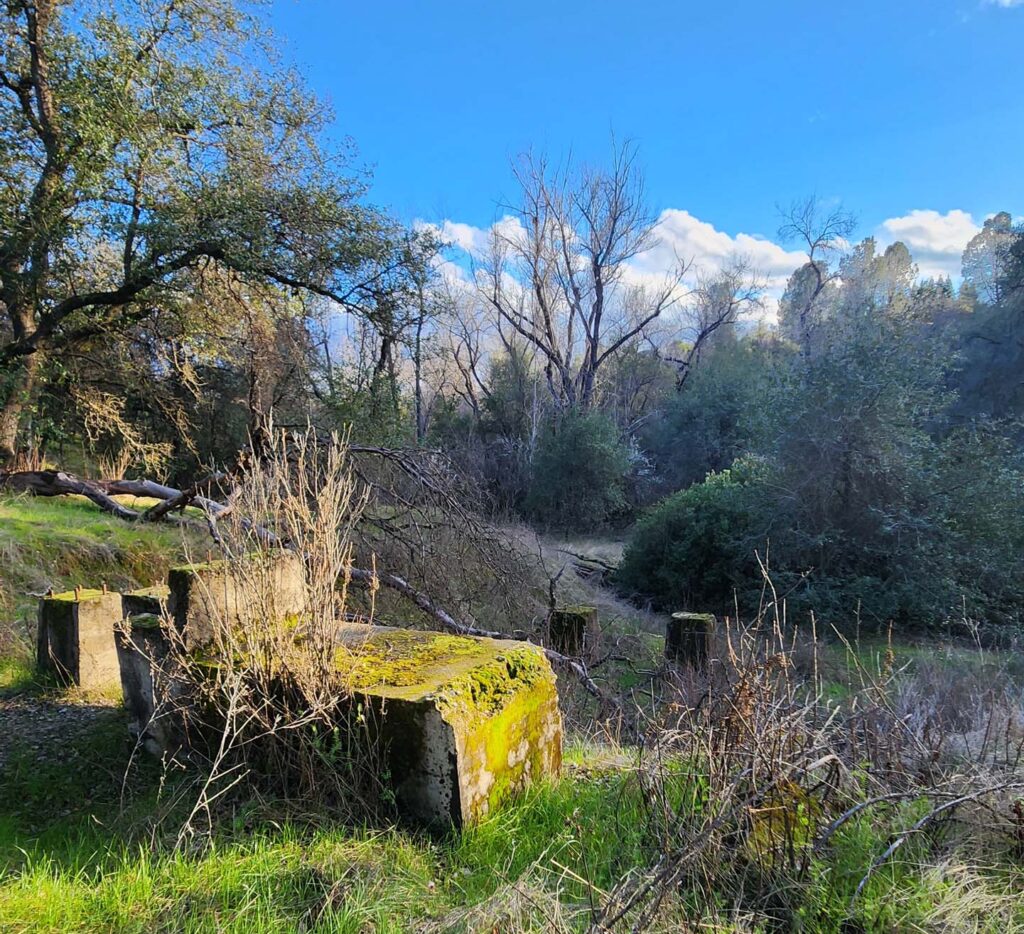
But perhaps more important is the fact that, many decades later, we can now enjoy the shade of towering oaks, cottonwoods, gray pines, and even one planted Douglas-fir, while listening to the breeze and birds as they flit through the willows, redbud, and toyon. The restoration and resilience of this land is a testament to a shift in land-use attitudes by the City of Redding, from one of extraction for monetary gain to one of social and spiritual connectivity and ecological balance. ~Juliet Malik
